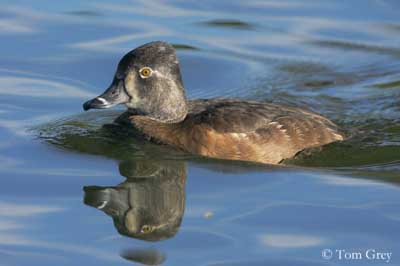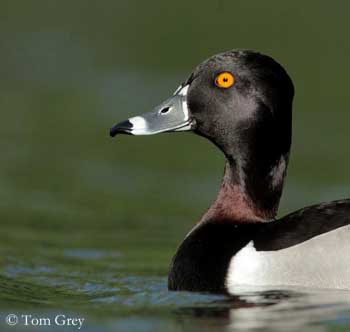
Fr: Fuligule à bec cerclé ou à collier
All : Ringschnabelente
Esp: Porrón Acollarado
Ital: Moriglione dal collare
Nd: Ringsnaveleend
Sd: Ringand
Photographers:
Tom Grey
Tom Grey's Bird Pictures
René Lortie
http://rlortie.ca
Tom Merigan
Tom Merigan’s Photo Galleries
Bob Moul
Nature Photography
Texte de Nicole Bouglouan
Sources:
HANDBOOK OF THE BIRDS OF THE WORLD vol 1 by Josep del Hoyo-Andrew Elliot-Jordi Sargatal - Lynx Edicions - ISBN: 8487334105
THE HANDBOOK OF BIRD IDENTIFICATION FOR EUROPE AND THE WESTERN PALEARCTIC by Mark Beaman, Steve Madge - C.Helm - ISBN: 0713639601
GUIDE DES CANARDS, DES OIES ET DES CYGNES – de Steve Madge - Delachaux et Niestlé - ISBN: 2603013769
All About Birds (Cornell Lab of Ornithology)
Bird Web (Seattle Audubon Society)
Animal Diversity Web (University of Michigan Museum of Zoology)
What Bird-The ultimate Bird Guide (Mitchell Waite)
Ring-necked Duck
Aythya collaris
Anseriforme Order – Anatidae Family
BIOMETRICS:
Length: 37-46 cm
Weight: 690-790 g
DESCRIPTION:
The Ring-necked Duck is a North American species, very distinctive with its angular head profile.

Male is slightly larger than female. It has large body, with black neck, upperparts and tail. Flanks are pale grey, separated from the black breast by white crescent. The underparts are white.
It has black iridescent head. The rear of the crown is slightly conical. A faint brown collar is sometimes visible at neck base.
The bill is grey-blue, with two white lines, one at the bill base, and the other just before the black tip. The eyes are golden yellow. Legs and webbed feet are blackish.
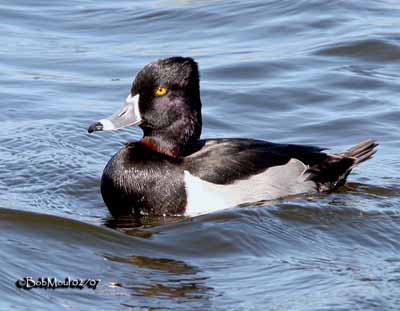
In non-breeding plumage, the male is browner on the body sides, but head, breast and back are darker. The white lines of the bill are absent.
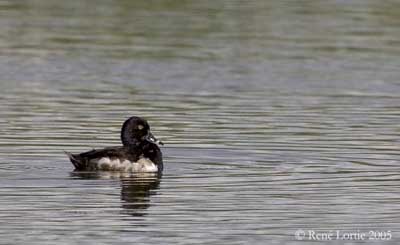
The female has pale brown flanks, dark brown back and white belly.
The white line at bill tip is less conspicuous than in male and she lacks that of the base. The head is smaller but the dark brown to blackish crown is pointed, and the face is pale. The eyes are pale brown, surrounded by whitish eye-ring trailing back to the ear.
The juvenile resembles female.
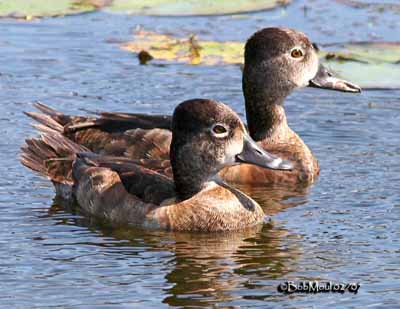
VOICE: SOUNDS BY XENO-CANTO
The Ring-necked Duck is relatively silent, but more vocal during the breeding season. The male gives a kind of purring in flight “pbbbr-pbbbr”. When alarmed, it utters low, harsh notes.
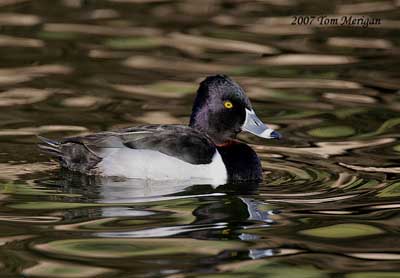
HABITAT:
The Ring-necked Duck is fairly common in freshwater marshes, ponds with dense vegetation on the shores, and small lakes.
During winter, it frequents the coastal marshes and sometimes the estuaries.
RANGE:
This species is found in North America and Canada. It occurs in C Canada and C Alaska, E to Newfoundland and southwards to C and W United States, as far as N California, Colorado and Great lakes area.
It can be vagrant in W Europe, Acores and Canary Islands.
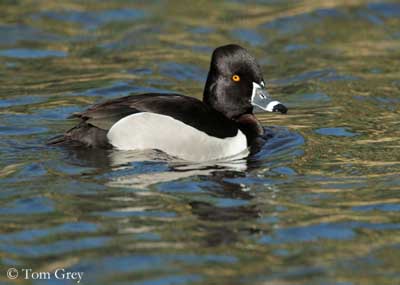
BEHAVIOUR:
The Ring-necked Duck feeds by diving. It can reach 12 metres depth to find the food. It also feeds by dabbling on the surface, and filters the mud.
It consumes seeds, roots and tubers, and other aquatic items such as leaves, stems and sedges.
During summer, it also catches aquatic invertebrates such as insects, spiders, worms, crustaceans and molluscs.
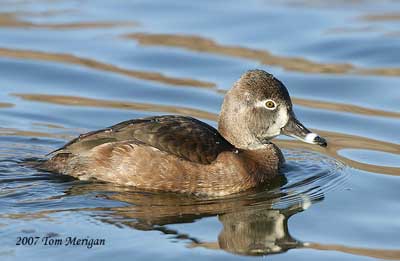
This species migrates and may nest in loose groups. It winters in lowlands along the seacoasts. It is a regular trans-Atlantic vagrant and can occur in Europe and mainly in Britain.
The Ring-necked Duck male and female occur in distinct groups until the breeding period.
The pair forms in March-April. The male performs some displays, throwing back the head, and then looking at the female while swimming. She follows him just behind.
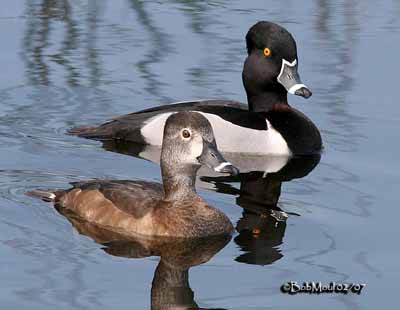
If threatened, the Ring-necked Duck hides the chicks into the dense vegetation as the dabbling ducks do, whereas the diving ducks lead them offshore.
FLIGHT:
The Ring-necked Duck is a strong and fast duck. It takes flight directly from the water and does not need to run before.
REPRODUCTION:
The breeding season starts in May.
The Ring-necked Duck may nest solitary or in loose colonies. The nest is built on the floating vegetation or in marshes. It is made with grasses and other plant materials. The interior is lined with down.
The female chooses the nest-site and builds the nest. The male remains in the vicinity but does not take part neither in building nor in nesting duties.
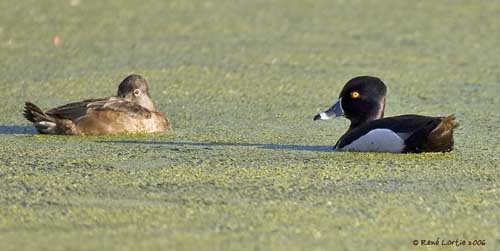
She starts to lay in May. The nest is finished after 3-4 eggs are led. Clutches of 8-9 eggs are typical. The eggs are creamy-white. Incubation lasts about 26-27 days by female alone. The chicks are covered in down, brown above and yellowish below. They are reared by the female during about 50-56 days, and they are able to fly at this time. They can breed at one year.
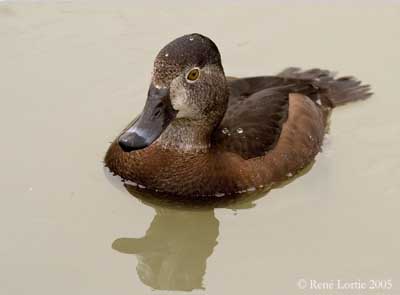
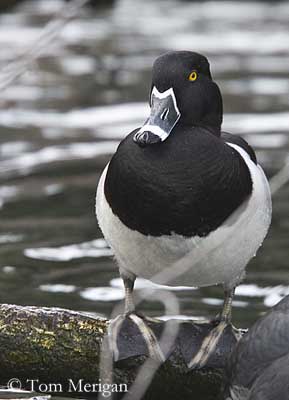
DIET:
The Ring-necked Duck feeds primarily on plant matter such as seeds, roots and tubers, leaves and sedges. But it also takes aquatic invertebrates such as insect larvae, molluscs, worms and crustaceans, mainly during summer and primarily the incubating female.
PROTECTION / THREATS / STATUS:
The Ring-necked Duck is not currently threatened by the destruction of its breeding grounds. It breeds in regions where there are not cultivated areas and little human activities.
However, it is vulnerable to hunting pressure, and to botulism due to remaining of lead in the water. This species is also preyed upon by raptors, foxes and coyotes.
But populations appear stable at this time.
